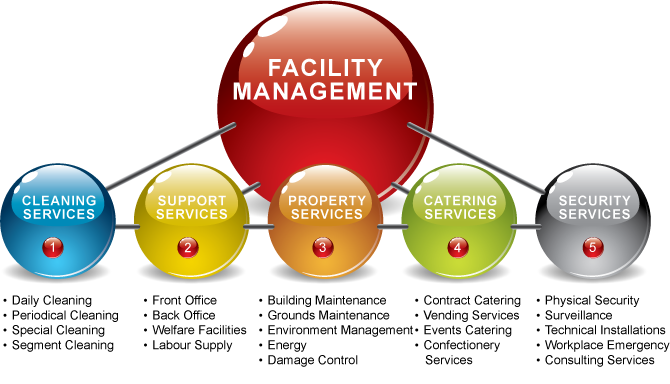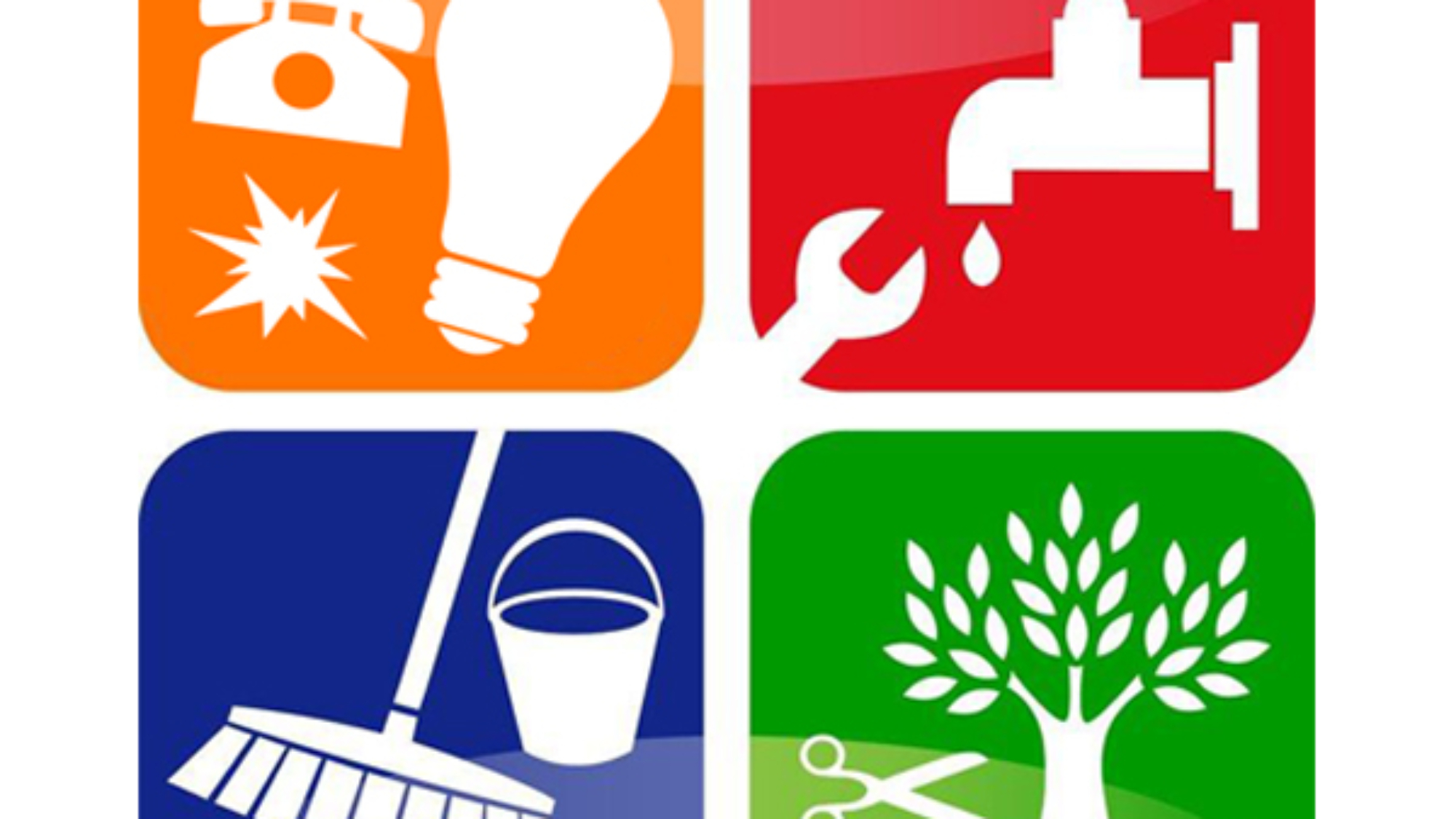Facility Management-- Necessary Providers for Effective Operations
Wiki Article
The Crucial Overview to Center Monitoring: Techniques for Success
Facility management plays an important duty in the general success of a company, functioning as the foundation that supports efficiency, safety and security, and productivity. By employing strategic approaches such as integrated technical options and fostering cross-departmental cooperation, companies can considerably enhance their functional structures. The subtleties of efficient center monitoring expand past mere logistics and call for a comprehensive understanding of both measurable and qualitative metrics. As we discover these essential approaches, a closer evaluation exposes exactly how they can transform not just facilities, but the actual culture within an organization itself. What might these changes look like in method?Comprehending Center Monitoring
What comprises efficient center management? Reliable center management incorporates the sychronisation of various organizational functions to make certain that built settings are secure, reliable, and helpful to productivity. It incorporates the concepts of design, style, and service management to develop a smooth operational circulation within an organization.Secret components of center administration include room planning, upkeep monitoring, and conformity with health and wellness regulations. Area planning concentrates on enhancing the usage of physical resources to support organizational objectives, while upkeep management guarantees that centers are maintained in optimal condition, taking full advantage of life expectancy and reducing functional prices. Compliance with legal and regulatory criteria is crucial, as it safeguards the company versus prospective responsibilities and boosts its reputation.
In addition, reliable facility administration depends on the calculated use technology, such as Structure Administration Systems (BMS) and Computer-Aided Facility Administration (CAFM) devices. These innovations promote real-time tracking of building systems and streamline maintenance processes (Facility Management). Eventually, a detailed approach to facility management not just advertises functional effectiveness however also promotes a favorable atmosphere for staff members and visitors alike, driving general organizational success

Trick Strategies for Optimization
Optimizing center management calls for a calculated approach that aligns functional experiment organizational purposes. To attain this, the very first vital technique is the execution of incorporated technical solutions. Utilizing sophisticated software application systems permits for real-time tracking of facility operations, helping with data-driven decision-making and enhancing overall performance.Secondly, normal analyses of center performance are important. Performing routine inspections and audits allows facility supervisors to recognize locations that need improvement, ensuring that sources are allocated properly. This aggressive method aids in decreasing downtime and improving service shipment.
An additional vital strategy is promoting partnership across divisions. By encouraging open interaction in between teams, facility supervisors can much better straighten their methods with company objectives, bring about improved functional synergy. In addition, engaging team in training programs promotes a culture of responsibility and improves their capability to add to optimization efforts.
Enhancing Safety Procedures
Reinforcing safety procedures is vital for developing a safe setting within centers. A comprehensive safety method not just secures employees and site visitors yet also boosts operational efficiency. Facility Management. To attain this, center managers need to conduct normal threat assessments to guarantee and determine possible hazards that appropriate procedures are in place
In addition, clear interaction channels must be developed to report safety concerns promptly. This includes creating an easily accessible platform for employees to voice possible dangers or occurrences without worry of . Leveraging technology can boost safety and security website here procedures; for instance, applying surveillance systems and gain access to controls aids check center tasks and limit unapproved entrance.
Lastly, compliance with regional guidelines and industry standards is non-negotiable. Normal audits and evaluations of security protocols make certain positioning with present laws and best practices. By prioritizing these techniques, facility supervisors can grow a society of security that shields all stakeholders and inevitably adds to the organization's success.
Improving Work Environment Environment
A favorable workplace atmosphere dramatically enhances staff member spirits and efficiency, making it a crucial focus for facility management. To produce such an atmosphere, center managers must prioritize numerous crucial elements, including comfort designs, looks, and staff member interaction.Ergonomic factors to consider are necessary to lessen physical strain and discomfort. This involves giving flexible furnishings, proper lights, and appropriate area for movement. These modifications can lead to lowered absence and increased work fulfillment.
Aesthetic appeals play a crucial duty in forming the work environment ambience. Making use of shade psychology, natural lighting, and greenery can promote a boosting and inviting atmosphere. Attentively designed spaces can improve creative thinking and enhance total well-being.
Additionally, urging worker interaction with comprehensive decision-making processes can enhance the sense of ownership and belonging. Collecting comments on work environment enhancements look these up and entailing workers in the style process can cause a more customized setting that meets their needs.
Last but not least, promoting health efforts, such as health cares and leisure spaces, can additionally contribute to an encouraging work environment culture. By concentrating on these methods, facility supervisors can effectively boost the office setting, driving both worker fulfillment and business success.
Determining Success in Facilities
Determining success in center management requires an extensive approach that examines both measurable and qualitative metrics. Quantitative metrics typically include vital efficiency indications (KPIs) such as area utilization prices, power intake, upkeep costs, and occupancy levels. These metrics provide a clear photo of functional performance and monetary efficiency, allowing center managers to recognize locations for enhancement and criteria versus industry requirements.Qualitative metrics, on the various other hand, focus on customer fulfillment and staff member engagement. Studies and comments systems can evaluate just how well the centers satisfy the demands of occupants, aiding to analyze the overall office atmosphere. This facet is essential, as a satisfied workforce is usually linked to raised efficiency and retention rates.
To properly gauge success, center supervisors should also think about integrating modern technology, such as building management systems and data analytics devices, to accumulate and evaluate pertinent data. Consistently reviewing both sets of metrics enables an extra well balanced sight of performance and educates strategic decisions. Ultimately, a successful facility administration technique pivots on a commitment to continuous enhancement, guaranteeing that both functional effectiveness and user fulfillment are prioritized.

Verdict
To conclude, reliable center administration is vital for improving business efficiency. By implementing incorporated technological options, conducting routine evaluations, and fostering collaboration across divisions, organizations can accomplish optimum source allocation and functional effectiveness. Prioritizing safety methods and improving office settings further contribute to enhanced worker satisfaction. Gauging success via both measurable and qualitative metrics enables for constant improvement, ultimately leading to lowered functional prices and a much more productive business atmosphere.Center administration plays a crucial role in the overall success of an organization, offering as the backbone that sustains performance, security, and performance.Secret aspects of facility administration consist of space preparation, upkeep monitoring, and conformity with wellness and security laws.Furthermore, efficient center administration counts on the critical use of innovation, such as Structure Management Solution (BMS) and Computer-Aided Facility Monitoring (CAFM) tools. Ultimately, a detailed strategy to center management not only promotes operational performance but also fosters a positive atmosphere for employees and this post site visitors alike, driving overall organizational success.
Inevitably, a successful facility administration technique hinges on a dedication to constant improvement, guaranteeing that both operational effectiveness and user complete satisfaction are focused on.
Report this wiki page